3 Minute Read
By Ruby Woollard, GWCT Farmland Ecology Placement Student
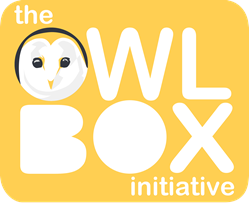 The Owl Box Initiative project carries out a range of monitoring activities to understand more about local barn owl populations and their use of habitat. To help achieve this, small mammals have been monitored using ink tracking tunnels to detect the presence of barn owl prey within various farmland habitats and to complement this research, barn owl pellets are collected at boxes located in these areas to tell us more about the abundance of prey available.
The Owl Box Initiative project carries out a range of monitoring activities to understand more about local barn owl populations and their use of habitat. To help achieve this, small mammals have been monitored using ink tracking tunnels to detect the presence of barn owl prey within various farmland habitats and to complement this research, barn owl pellets are collected at boxes located in these areas to tell us more about the abundance of prey available.
At first, owl pellets may not look like much, brown oval blobs which to the unfamiliar eye may be mistaken for something that’s come from the back end of a fox! In fact, owl pellets are made up of the undigestible parts of their prey, which are usually swallowed whole, and regurgitated six or more hours later as a pellet. Therefore, by dissecting them, this allows you to discover precisely what the owl has been feeding on.
Over the winter, I teamed up with the Owl Box Initiative to dissect barn owl pellets to find out a little bit more about the owls that they’ve been monitoring (See Figure 1). Just over 140 pellets were collected from various barn owl boxes during nest box checks in the summer of 2021. They were then air dried and stored in brown envelopes, ready to be analysed. Each pellet is weighed, and the length and width measured before the fun bit begins – dissection!
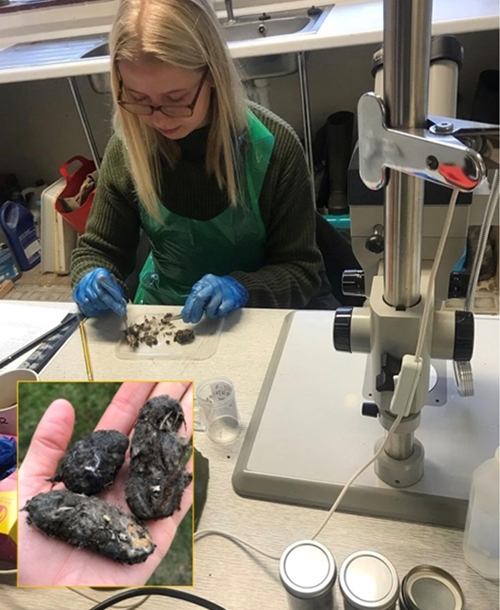
Figure 1. Dissecting barn owl pellets in the lab, using a binocular microscope to identify small mammal bones to species level.
Tweezers are used to prize the pellet apart and carefully pick away at the softer inside which is mostly made up of fur. It has been interesting to see the variation in density between owl pellets – some break open easily and almost fall apart, whereas others require quite some force to tweeze just a tiny bit of fur out. Straight away, the presence of this fur indicates that the barn owl has been eating small mammals but it’s only the bones which indicate the number and species that have been recently eaten.
The skulls and jaws are the most useful bones to look at as these contain the teeth, which has been the primary feature that I have been using to distinguish different species from one another. For example, if there is a gap between the incisors and the cheek teeth, then this is a rodent (See Figure 2), but if it has a continuous row of teeth, then it is an insectivore, which have most commonly been shrews (See Figures 3 and 4). Moles and bats can also be found, but much more rarely. Rodents are split into mice, rats and voles which are then identified to species level, again, largely using teeth features. Shrews can also be identified to species level using their teeth, as well as the size and the shape of their skull.
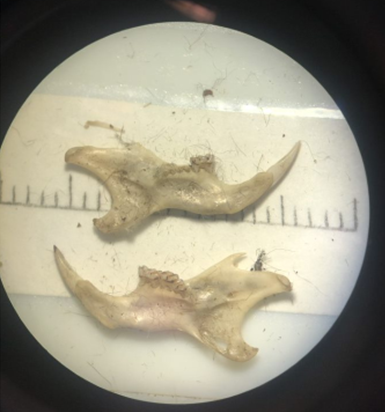
Figure 2. The lower jaws of a wood mouse; the gap between the front incisor and central jaw teeth indicate it is a rodent.
However, small mammals aren’t the only items that the barn owls have been eating – we’ve also come across beetle remains, small pieces of eggshell, feathers, and a bird skull! Lizard and amphibian bones may also be found in the pellets, although we did not stumble upon any of these. My personal favourite find has been a water shrew, as these are scarcely found in owl pellets. At first glance, I thought it may just be a large common shrew, but when I looked down the microscope at its teeth, I noticed its distinctive four unicuspids on each side (See Figure 3) rather than the five found in common and pygmy shrews (See Figure 4), and its skull was larger (See Figure 5).
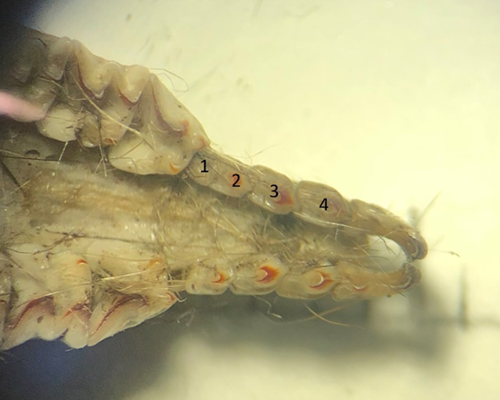
Figure 3. Water shrew, an insectivore with continuous upper teeth, showing 4 unicuspids on each side.
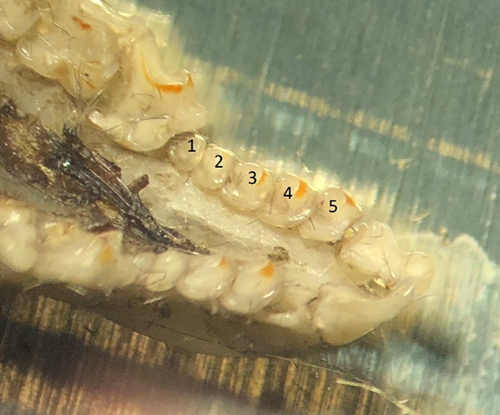
Figure 4. Common shrew, an insectivore with continuous upper teeth, showing 5 unicuspids on each side.
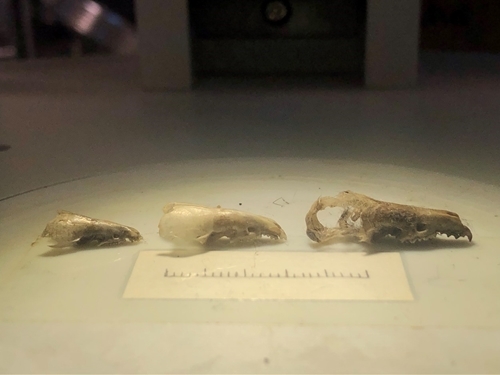
Figure 5. Shrew skull comparison (left to right: pygmy shrew, common shrew, water shrew)
From my few short weeks analysing barn owl pellets I learnt a lot and will now look at those brown oval blobs with much more intrigue than I used to. It has also shown the importance of small mammals to barn owls as a prey item, and therefore highlighted that habitat provision for species such as mice, voles and shrews is a key barn owl conservation measure to incorporate into the farmed landscape. It has been fantastic helping the Owl Box Initiative with this project and I can’t wait to see the results that come from it!
Support the Owl Box Initiative
You can help support the project by purchasing an Owl Box Initiative Supporter Badge or Living Nature Soft Toy Barn Owl from the GWCT.